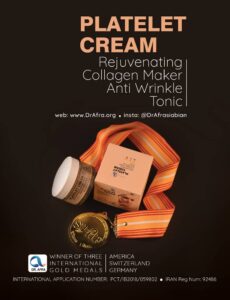Put an order for your AfraPro Platelet Cream before Christmas, to get an extra bottle for free.
Aging
Worldwide, the age group of sixty years old and older is growing faster than any other age group [1]. With this remarkable increase in older adults, promoting health and well-being becomes a priority for aging well [2]. Aging well has been conceptualized using different contemporary theoretical frameworks in the last decades, including healthy aging, positive aging, productive aging, active aging, and successful aging [3, 4]. These theoretical frameworks integrate both biological and social sciences, considering social participation, psychology, lifestyles, activities, finances, and other domestic and environmental factors as well [4]. The WHO defines active aging [1] as “the process of optimizing opportunities for health, participation, and security in order to enhance quality of life as people age including those who are frail, disabled, and in need of care.” As a policy framework [1, 5], active aging allows people to realize their potential for physical, social, and mental well-being throughout the life course and to participate in society.
The state of well-being is a multifaceted phenomenon in the older population which generally involves happiness, self-contentment, satisfying social relationships, and autonomy [6]. In this case, the sense of well-being refers to an individual’s feelings based on how older persons perceive the concept of well-being. Thus, the term “subjective well-being” is frequently used [7]. Well-being is also subject to other persons’ feelings about oneself whether that is positive or negative. According to McNulty et al. [8], well-being is determined jointly by the interplay between individual characteristics and qualities of people’s social environments.
PLATELET CREAM
Afrapro platelet cream is an invention using complementary medicine to the synthesis of anti-aging cream which is effective, non-invasive and based on scientific principles. Read this post to get more information.









